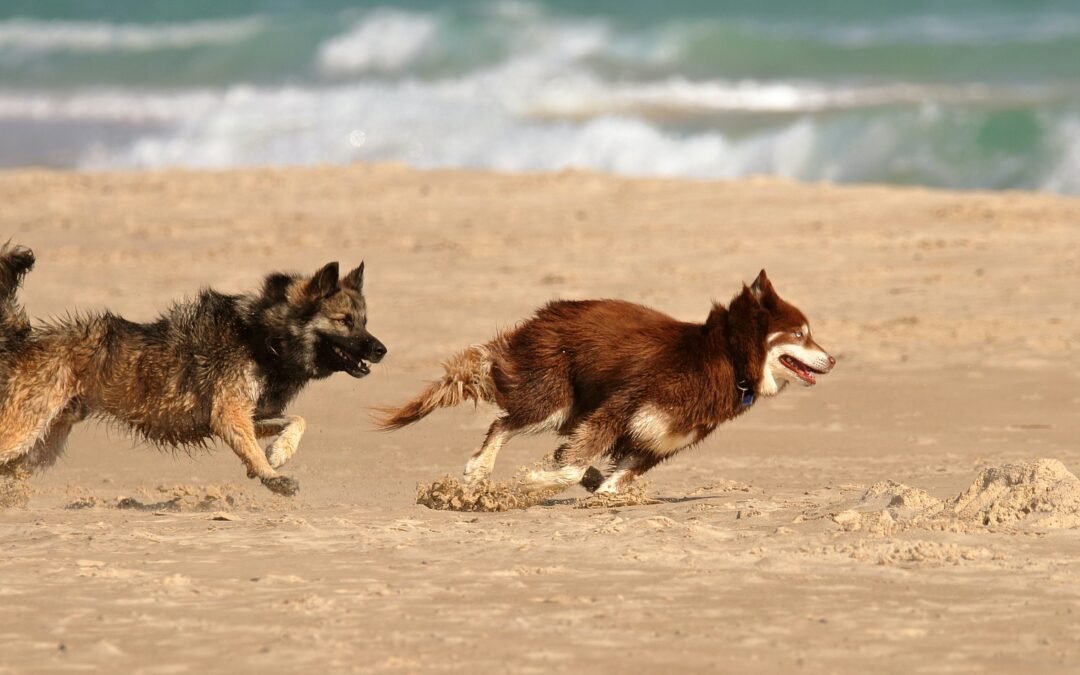Here’s the scenario: you are out walking your dog and you spy another (insert dog, bicycle, person, stroller) etc. and you know your dog is going to react to that thing. Most people wait until their dog starts reacting to do anything to help support them to get them through the experience.
This is the exact opposite of what the dog needs. They need to be supported as soon as, if not earlier, whenever possible.
Traditional training may also focus on distracting our dog from their problems (with a treat, with a look at me, with any other methods that you might have heard about.) What we actually don’t want to do, in reality, is to not distract our dogs from their problems. That only serves to manage your dog in the face of any stressor.
Why is it that most training systems seek to manage dogs or deal with the aftermath of the problem, rather than the root source of the problem? Well the answer is simple- it’s traditional dog training, whether it’s the old school Koehler method of dog training or an all positive trainer or an electric collar trainer, they all focus on managing a dog in the situation, not helping the dog feel differently to act differently in the face of a stressor.
EMOTIONS MATTER
The emotions of your dog are the root cause of their behavior problems. How they feel about the car, dog, child, stroller, bicycle, thunderstorm, etc. etc. is why they react, whether in fear or aggressively. They are trying to get away from the thing that scares them, arouses them, causes them casternation. I often tell my clients the reason that their dog typically acts aggressively is because the best defense is an offense. Waiting for something to come at you that might cause you potential harm, or fear, or arousal is the last thing that most dogs are going to do. They will do whatever it takes for them to feel safe, whether it is fleeing from that thing or moving aggressively towards it in the hope that it will make the other thing go away.
WHY WAITING IS SO BAD FOR YOUR REACTIVE DOG
When we aren’t proactive on behalf of our dogs, we are leaving them to their emotions and the responses that they feel serve them the best. We aren’t helping them to change their emotional state and get to a place of calm and relaxation in the face of that stressor. We cannot avoid everything in this world and traditional training is all focused on at least getting through the situation instead of dealing with the situation.
Reactivity is an in the moment response to the trigger. As we wait for our dog’s response we are actually losing that precious time in the “before time” that could help them react and feel differently about that trigger. If they feel differently they will not be “that reactive dog” that we all know and try to avoid in our neighborhoods.
But there is that before time that exists that we could use to assist our dogs to get through and change their emotional states.
Perception modification techniques, using the Training Between the Ears (“TBTE”), addresses that before time that is so critical to helping our dogs truly heal and feel emotionally stable.
WHY WOULD THIS WORK
Being a reactive dog is so hard on our dogs, it is stressful, exhausting and terrifying for your dog. Imagine if it was you that was experiencing and acting this way? How would you feel?
Living as a reactive dog must be one of the hardest things to endure, not just for the dog, but their owner as well.
So helping a dog BEFORE they react by supporting them and getting to them to think differently is a critical part of the healing process. We use a protocol called intermediate bridging in TBTE methods (and as far as we know the creation of Kayce Cover of Syn Alia Training Systems). By helping the brain to stay out of arousal or stimulation or fear, we can help our dogs feel and act differently.
The brain is complicated, but thrives on information and assistance in navigating the world. This is true for both humans and for dogs. Giving this assistance via the intermediate bridge is an unusual approach, but one that works to help change how your dog feels about the thing that causes its reaction and reactivity.
But the intermediate bridge is the proactive approach to a reactive dog that is missing for so many trainers. By assisting the brain to help think and feel differently via its use we can actually change how our dog feels and thinks in the face of that stressor.
Curious as to the role the intermediate bridge and perception modification techniques can help your reactive dog? Contact us for a free phone consultation to talk about your dog and how we can help!

